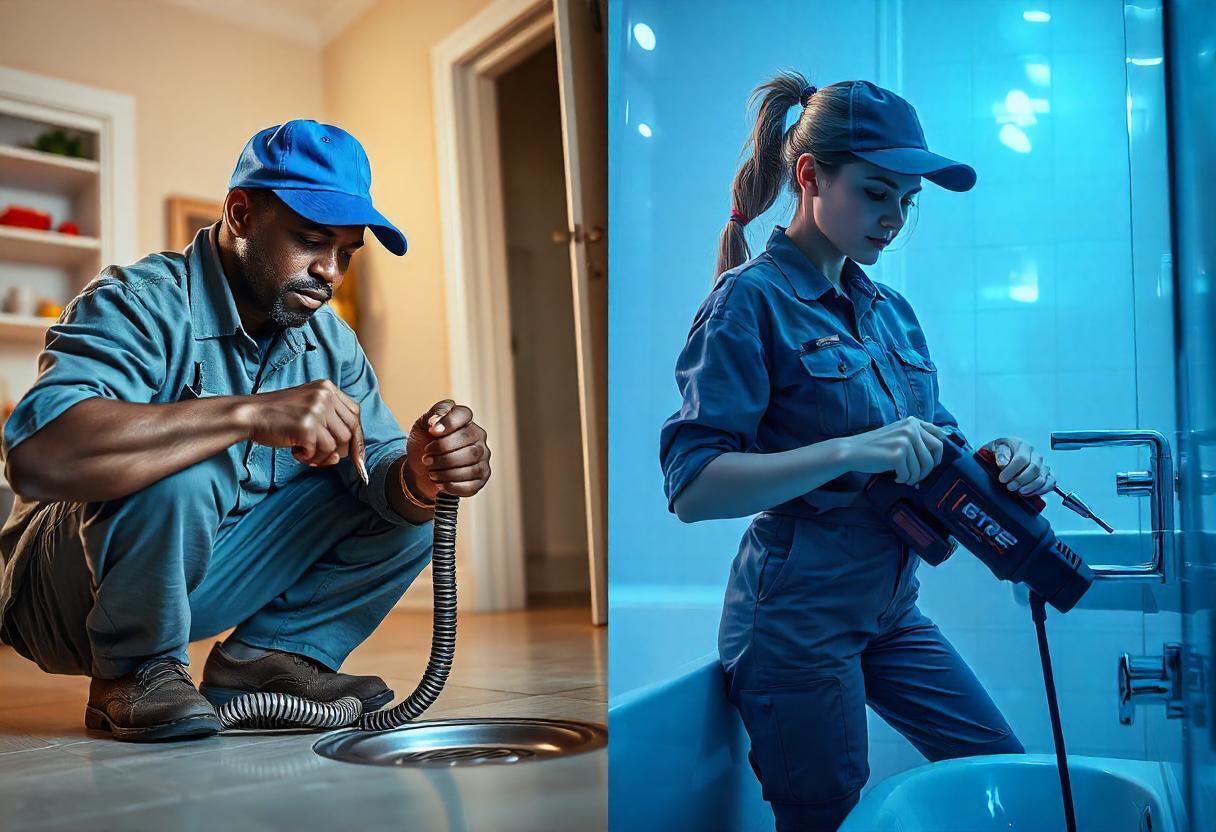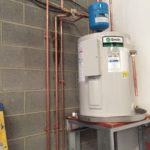If you’ve ever had a clog in your plumbing, you may have heard terms like “drain cleaning” and “drain clearing” tossed around. Many people use them interchangeably, but they are actually different processes that serve unique purposes. Understanding the difference can help you decide which solution is best for your home’s needs and can even extend the life of your plumbing. Here’s a closer look at what sets these two approaches apart and why knowing the difference matters.
1. Understanding Drain Clearing
Drain clearing is the immediate solution for when your drain becomes clogged and water flow is significantly reduced or blocked altogether. This process involves removing the obstruction to restore normal water flow. Here’s a closer look at what it involves:
- Basic Tools and Techniques: Drain clearing usually requires simpler tools like a plunger, drain snake, or auger. These tools help break apart or dislodge the material causing the blockage, such as hair, grease, food particles, or even small items.
- Quick, Temporary Fix: Clearing the drain will get water moving again, but it doesn’t address the underlying buildup or residue. For example, using a plunger may push a blockage through but doesn’t remove debris left behind.
- When to Use Drain Clearing: It’s best for minor, isolated blockages, especially if this is the first time a particular drain has clogged. It’s a quicker fix, generally done without advanced equipment, and works well for localized clogs, such as a slow-draining sink or toilet.
2. What Is Drain Cleaning?
Drain cleaning goes deeper than clearing. Instead of just removing the clog, it thoroughly cleans the inside of the pipes, eliminating any accumulated grease, mineral deposits, and debris. Here’s how drain cleaning works:
- Professional Equipment: Professionals use tools like hydro-jetters, which emit high-pressure water to scrub the interior walls of the pipes. This technology reaches every crevice, completely clearing away buildup that can lead to recurring blockages.
- A Long-Term Solution: Drain cleaning prevents future clogs by addressing the root cause—residual buildup. It’s a preventive maintenance step that keeps your pipes in top condition.
- When to Use Drain Cleaning: If you’re dealing with recurring clogs or your plumbing system hasn’t been maintained in years, drain cleaning is your best choice. It’s also highly recommended for commercial properties or households with heavy use that can lead to stubborn buildups.
3. The Key Differences: Why It Matters
Both methods serve to restore proper drainage, but their long-term effects are vastly different:
- Effectiveness Over Time: Drain clearing is a short-term solution, while drain cleaning is designed to keep your pipes clear over time, reducing the need for future interventions.
- Cost and Time: Drain clearing is typically quicker and less expensive, but repeated clearing can add up. In the long run, drain cleaning may save money by preventing frequent clogs.
- Pipe Longevity: Over time, untreated buildup can erode and damage pipes, leading to costly repairs. Drain cleaning maintains pipe health by removing corrosive materials, which prolongs the life of your plumbing system.
4. Which Option Is Right for You?
If you’re unsure which approach to take, here are a few questions to consider:
- Is this clog recurring? Recurring clogs may signal buildup that requires drain cleaning.
- Are you experiencing multiple slow drains? When more than one drain is slow, it could indicate a larger issue within your pipes that may need cleaning.
- How old is your plumbing system? Older pipes with significant buildup will benefit from professional drain cleaning, helping to avoid future clogs and costly repairs.
5. How Professionals Handle Drain Cleaning and Clearing
Plumbing professionals assess the situation to determine the best approach. Drain cameras may be used to inspect the pipes and identify potential problem areas. They will decide whether clearing, cleaning, or both are needed based on the blockage type, pipe condition, and likelihood of recurrence.
- Cabling for Blockages: This clearing technique involves using an electric motor to drive a snake through the blockage, removing or breaking it up.
- Hydro-Jetting for Buildup: When the goal is to fully clean the pipes, hydro-jetting is often used. This technique is especially effective for tackling stubborn grease and scale buildup in pipes.
6. Benefits of Regular Drain Cleaning
- Preventative Maintenance: With regular drain cleaning, you can avoid disruptive clogs and costly emergency repairs.
- Improved Drain Efficiency: Properly cleaned drains allow water to flow freely, reducing the chance of backups.
- Increased Plumbing Lifespan: By keeping your pipes clear, you reduce corrosion and buildup that can damage your plumbing over time.
Final Thoughts
Choosing between drain clearing and drain cleaning depends on your specific situation, the age and condition of your pipes, and your long-term plumbing goals. While clearing a drain may offer a quick fix, drain cleaning provides a more thorough and lasting solution. For peace of mind, consider scheduling routine drain cleaning to maintain healthy pipes and avoid unexpected plumbing issues.





